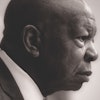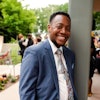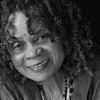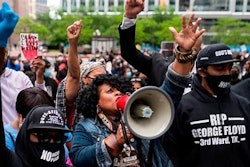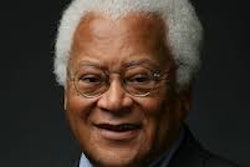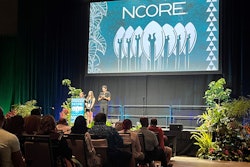The rise in social activism on campuses — generated by continued anti-Black violence and hate crimes against Asian Americans — has led many colleges and universities to analyze their diversity policies and practices.
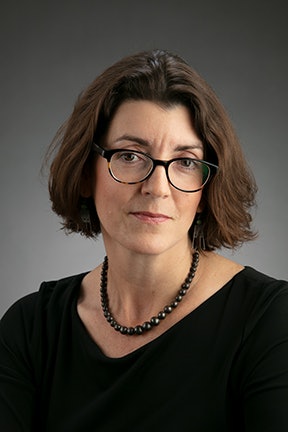 Dr. Monica Russel y Rodriguez
Dr. Monica Russel y RodriguezIn many places, the conversation starts with reexamining the role of the chief diversity officer, who is often charged with helping institutions develop “cultural competency and expand the social bandwidth of their respective institutions,” says Elizabeth Moore, interim chief diversity officer at Gallaudet University.
For institutions that didn’t already have a chief diversity officer (CDO), the initial steps to change involved hiring one.
“They build cultural bridges that connect the human condition to academia and social influence for more equitable outcomes,” Moore adds. “It is our responsibility to support efforts that strive to create a more just society. Therefore, we must model advocacy and encourage campus leaders, faculty, staff and students to be advocates for underserved and underrepresented communities.”
Activism on campuses comes in various forms, often including demonstrations by students and faculty who might also write letters calling for action to the public or university administration.
However, campus activism also involves social justice and equity initiatives that the institution endorses and funds. And, while these initiatives may be less flashy than public demonstrations, they are essential to structural change, says Dr. Monica Russel y Rodriguez, assistant provost in the Office of Institutional Diversity and Inclusion at Northwestern University. For example, Northwestern faculty members are working on a prison education program focused on fixing the school to prison pipeline.
“Those [programs] are not public protests but those are very important parts of our institution,” says Russel y Rodriguez. “While it is important to pay attention to the public demonstrations, it is also really important to focus on the work that people are doing that takes years to develop.”
Many institutions are working toward developing such long-term strategies to address systemic racism.
In 2020, University of Virginia administrators announced several initiatives, including that all students, regardless of citizenship status, would be eligible to enroll and that the athletics department would make plans to change the school logo. But the campus community is still urging administrators to revisit the racial equity task force’s recommendations that it develop anti-racist curriculum, increase minority representation in the faculty and confront statues and building names with Confederate ties.
“I think we have to make sure that we are continuing to be reflective individually and organizationally,” says Dr. Kevin McDonald, vice president of diversity, equity and inclusion and community partnerships at UVA. “And continue to check in with the community to make sure that what has been devised, developed and implemented is still meeting the needs of the community. Sometimes there are new needs that arise.”
More recently, those check-ins at UVA involve addressing concerns of Asian American students,
 Dr. Kevin McDonald
Dr. Kevin McDonaldacknowledging the institution’s history with slavery and increasing engagement with indigenous communities, since UVA sits on the ancestral land of the Monacan Nation.
“I am grateful to be a part of the community and grateful to be a part of the effort moving forward,” says McDonald. “That does not mean we are getting everything right. But the great thing about it is that we continue to kind of lean into the important conversations and commit ourselves to working hand-in-hand with our community to charter an important path forward together.”
Under a social justice initiative at Northwestern, administrators highlighted 10 commitments focused on reviewing campus police practices, increasing diversity training and developing anti-racist curriculum.
Staff and faculty have also developed programs to highlight social justice issues from a research perspective, such as the Center for Interdisciplinary Exploration and Research in Astrophysics (CIERA).
“I think there is a willingness to hear not only the problems that students are experiencing, but how they imagine the solution,” says Russel y Rodriguez. “There are protests for sure. There are big things happening out there in the world, and the university has an intersection with those big things, including policing and how do we respond to COVID? Those are all really difficult problems. Students and faculty are well-positioned to have commentary on them.”
Gallaudet University has become “accustomed to challenging conventional ways of thinking and being,” according to Moore. Still, the school is working to provide more platforms for students to participate in community dialogue and demonstrations.
Going forward, the university aims to research the impact of structural violence and systemic oppression within deaf communities and build relationships with organizations that support equitable outcomes and incorporate more inclusive ideas within the curriculum.
“Our ‘big goal’ is to provide a safe and welcoming bilingual learning environment where deaf and hearing community members, across the spectrum of identities and abilities, feel accepted, appreciated and affirmed,” says Moore. “More than anything, we want all students, faculty and staff to feel and believe they are valued and belong at Gallaudet … that they belong and have a place in this world.”
Students are also taking action on campus by holding leadership positions in government or establishing their own organizations. At Northwestern, students proposed the implementation of a mentorship program.
Those leaders remain a “vital” aspect of campus communities, according to Russel y Rodríguez.
“I do not think it is an us versus them, university versus students,” she adds. “They are part of us and we are part of them. Trying to break out of that kind of a duality is a mental concept I am trying to put forward.”
With their work running parallel to social justice issues, CDOs can also serve as an outlet beyond protesting for students to express their concerns and needs.
“Students are energized but they are also exhausted by having to use [protest] as their mode of communication,” says Russel y Rodriguez. “I think opening other spaces is good. It is not always as effective, but [we] try to find other ways in which we can have productive conversations and opportunities to hear ideas.”
Behind the scenes work is also taking place among administrators and staff members. Patterns are aggregated as an effort to understand students’ experiences.
“I feel like my colleagues here at Northwestern are fantastic and very motivated to figure out what is happening to students across the board so that we can be proactive,” says Russel y Rodriguez.
To be effective in their leadership, CDOs must remain highly involved with their communities and in “critical conversations,” according to McDonald.
“They have to be engaged on the subject matter, not defensive, be able to hear critiques,” he says. “Not over promising and under delivering. I think all of those are going to be incredibly important so that you can hear the sentiments of your community, hear how that relates to what is happening nationally or globally and then ultimately work with communities to identify important paths forward.”
That, says Moore, is the work of the CDO: building “cultural competency and expanding the social bandwidth of their respective institutions.”
This article originally appeared in the April 15, 2021 edition of Diverse. Read it here.

